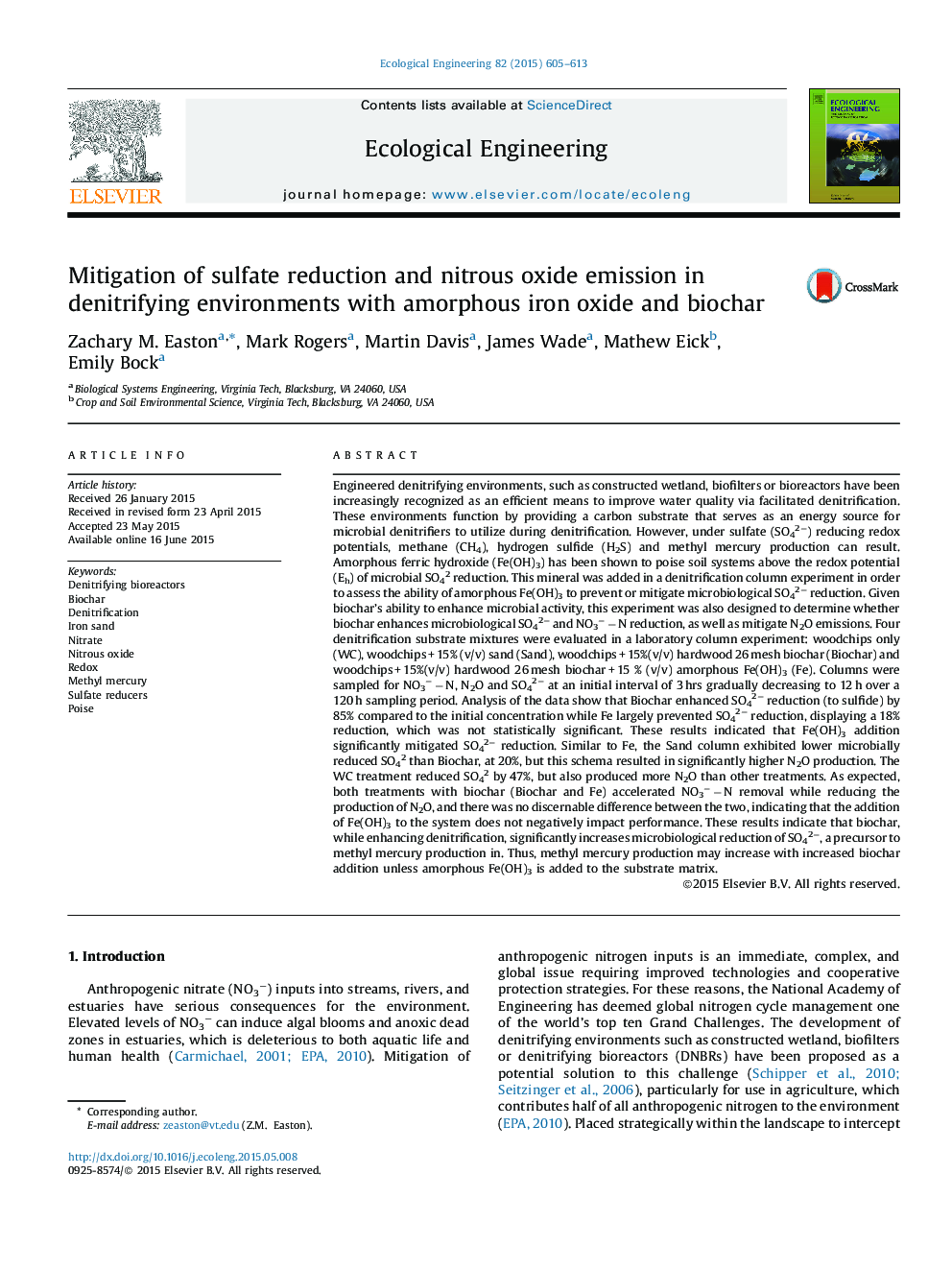| Article ID | Journal | Published Year | Pages | File Type |
|---|---|---|---|---|
| 4389013 | Ecological Engineering | 2015 | 9 Pages |
Engineered denitrifying environments, such as constructed wetland, biofilters or bioreactors have been increasingly recognized as an efficient means to improve water quality via facilitated denitrification. These environments function by providing a carbon substrate that serves as an energy source for microbial denitrifiers to utilize during denitrification. However, under sulfate (SO42−) reducing redox potentials, methane (CH4), hydrogen sulfide (H2S) and methyl mercury production can result. Amorphous ferric hydroxide (Fe(OH)3) has been shown to poise soil systems above the redox potential (Eh) of microbial SO42 reduction. This mineral was added in a denitrification column experiment in order to assess the ability of amorphous Fe(OH)3 to prevent or mitigate microbiological SO42− reduction. Given biochar’s ability to enhance microbial activity, this experiment was also designed to determine whether biochar enhances microbiological SO42− and NO3− − N reduction, as well as mitigate N2O emissions. Four denitrification substrate mixtures were evaluated in a laboratory column experiment: woodchips only (WC), woodchips + 15% (v/v) sand (Sand), woodchips + 15%(v/v) hardwood 26 mesh biochar (Biochar) and woodchips + 15%(v/v) hardwood 26 mesh biochar + 15 % (v/v) amorphous Fe(OH)3 (Fe). Columns were sampled for NO3− − N, N2O and SO42− at an initial interval of 3 hrs gradually decreasing to 12 h over a 120 h sampling period. Analysis of the data show that Biochar enhanced SO42− reduction (to sulfide) by 85% compared to the initial concentration while Fe largely prevented SO42− reduction, displaying a 18% reduction, which was not statistically significant. These results indicated that Fe(OH)3 addition significantly mitigated SO42− reduction. Similar to Fe, the Sand column exhibited lower microbially reduced SO42 than Biochar, at 20%, but this schema resulted in significantly higher N2O production. The WC treatment reduced SO42 by 47%, but also produced more N2O than other treatments. As expected, both treatments with biochar (Biochar and Fe) accelerated NO3− − N removal while reducing the production of N2O, and there was no discernable difference between the two, indicating that the addition of Fe(OH)3 to the system does not negatively impact performance. These results indicate that biochar, while enhancing denitrification, significantly increases microbiological reduction of SO42−, a precursor to methyl mercury production in. Thus, methyl mercury production may increase with increased biochar addition unless amorphous Fe(OH)3 is added to the substrate matrix.
